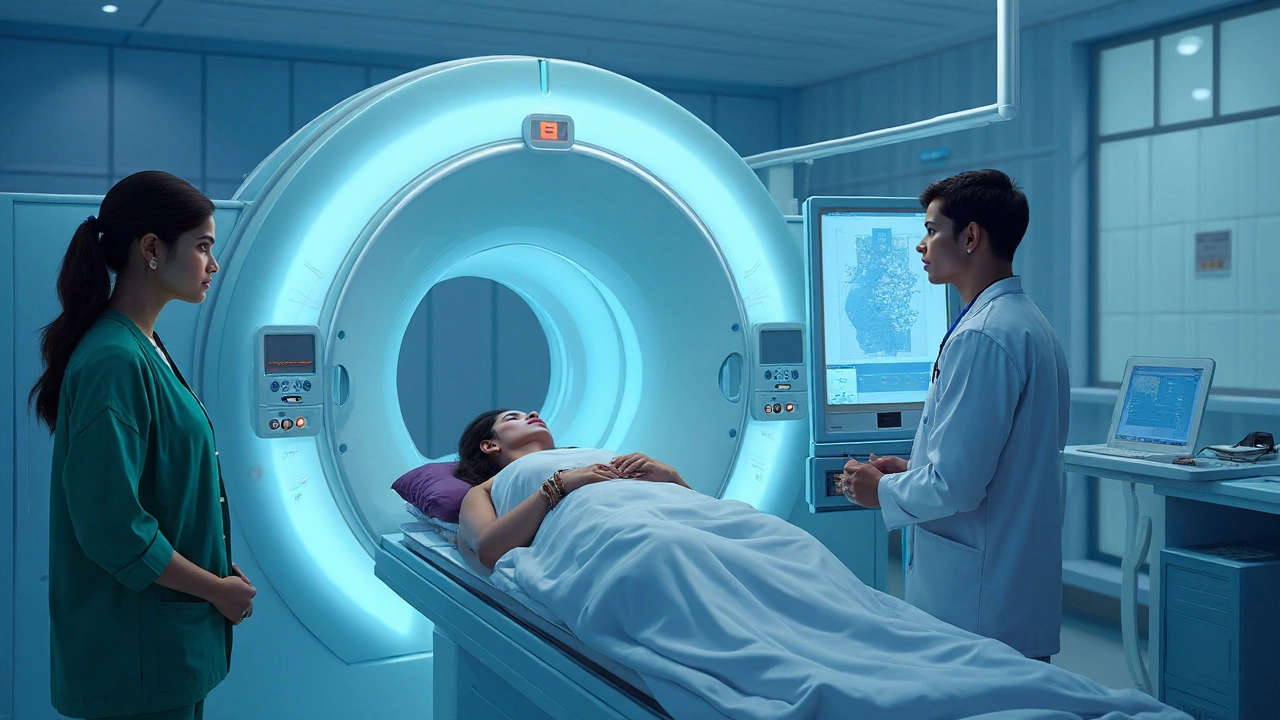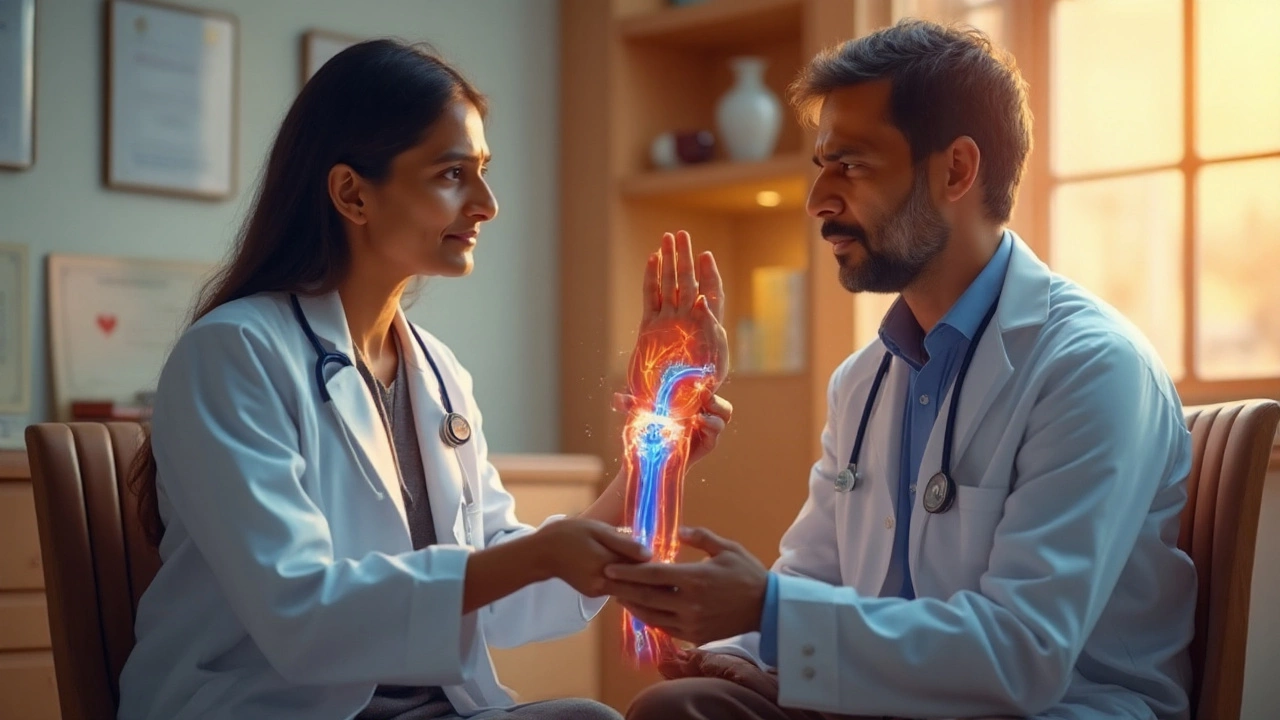Nerve Injury Care Decision Quiz
Orthopedic doctor is a medical specialist who focuses on the musculoskeletal system-bones, joints, muscles, ligaments and tendons. While their primary training emphasizes bone and joint disorders, many orthopedists also manage nerve injuries that arise from trauma or compression within that system.
Nerve damage is a disruption of the normal function of peripheral nerves, leading to pain, weakness, numbness or loss of movement. Causes range from fractures and dislocations to chronic compression, such as carpal tunnel syndrome.
Why the Question Matters
If you’ve hit your elbow, broken a wrist, or suffered a sports injury, the first doctor you see might be an orthopedic surgeon. But you may wonder whether they can also address the tingling, burning, or loss of sensation that often accompanies such injuries. Understanding the scope of an orthopedic doctor’s practice helps you avoid unnecessary delays and get the right care the first time.
When Orthopedic Doctors Treat Nerve Damage
- Traumatic nerve injury that occurs alongside a bone fracture (e.g., radial nerve injury with a humeral fracture).
- Compression neuropathies caused by bone spurs, joint degeneration, or entrapment within a muscular tunnel (e.g., ulnar nerve compression at the elbow).
- Post‑operative nerve dysfunction after orthopedic surgery, where the surgeon monitors recovery and may perform nerve releases.
In these scenarios, the orthopedist can both stabilize the skeletal injury and address the associated nerve problem, often without a separate referral.
When to See a Neurologist Instead
Neurologist is a physician specializing in the nervous system, including the brain, spinal cord and peripheral nerves. A neurologist becomes the go‑to specialist when:
- The nerve injury is isolated from any bone or joint damage (e.g., pure peripheral neuropathy from diabetes).
- Complex nerve disorders such as brachial plexus injuries require detailed electrophysiological mapping.
- Medical management with medications, nerve blocks, or advanced neuro‑rehabilitation is needed.
Diagnostic Tools Orthopedic Doctors Use for Nerve Injuries
Modern orthopedics relies on imaging and electro‑diagnostic studies to pinpoint nerve involvement.
- MRI (Magnetic Resonance Imaging) provides high‑resolution pictures of soft tissue, revealing nerve swelling or entrapment adjacent to bone.
- EMG (Electromyography) and nerve conduction studies measure the electrical activity of muscles and nerves, confirming the location and severity of injury.
- Ultrasound can dynamically visualize peripheral nerves in real time, especially useful for guiding injections.

Treatment Options Orthopedic Doctors Offer
Depending on the injury’s cause and severity, orthopedists may choose between conservative and surgical pathways.
Conservative Management
- Immobilization - casting or splinting to prevent further nerve stretch.
- Physical therapy - targeted exercises to restore muscle strength and improve nerve gliding.
- Physical therapist is a rehabilitation professional who designs movement programs to promote healing and functional recovery.
- Oral medications for neuropathic pain (e.g., gabapentin) when indicated.
Surgical Intervention
- Neurolysis - freeing a compressed nerve from scar tissue or bone spurs.
- Nerve repair or grafting - stitching severed nerve ends or bridging gaps with donor nerves.
- Surgical repair is a procedure performed by an orthopedic surgeon to restore continuity of a damaged peripheral nerve.
- Joint realignment (e.g., corrective osteotomy) to relieve chronic nerve compression caused by mal‑alignment.
How a Multidisciplinary Team Works Together
Effective nerve care often involves several specialists. Below is a quick comparison of three key providers most patients encounter.
| Provider | Primary Training | Typical Interventions | When They Lead Care |
|---|---|---|---|
| Orthopedic doctor | Musculoskeletal surgery | Fracture fixation, neurolysis, nerve repair, splinting | When nerve injury is linked to bone/joint trauma |
| Neurologist | Neurology (brain, spinal cord, peripheral nerves) | EMG/NCV, medications, nerve blocks, referral for surgery | Isolated neuropathies or complex nerve disorders |
| Physical therapist | Rehabilitation science | Therapeutic exercises, manual nerve gliding, functional training | After surgery or during conservative management |
Typical Patient Journey
- Injury occurs - fracture or trauma may also injure nearby nerves.
- Emergency/primary care visit - X‑ray confirms bone injury; physician suspects nerve involvement.
- Referral to orthopedic doctor - surgeon evaluates both bone stability and nerve status.
- Diagnostic work‑up - MRI and EMG are ordered as needed.
- Decision point - if nerve injury is mild, orthopedist starts conservative care; if severe, plans surgery or co‑manages with a neurologist.
- Rehabilitation - post‑op or post‑conservative therapy with a physical therapist.
- Follow‑up - periodic EMG checks to monitor nerve regeneration.
Key Takeaways
- Orthopedic doctors **can** treat many forms of nerve damage, especially when the injury is tied to bone or joint trauma.
- Pure nerve disorders without skeletal involvement are better managed by neurologists.
- Imaging (MRI) and electro‑diagnostic studies (EMG) are essential tools for accurate diagnosis.
- Treatment ranges from splinting and therapy to surgical nerve release or repair.
- Coordinated care with neurologists, physical therapists and sometimes pain specialists yields the best outcomes.
Frequently Asked Questions
Can an orthopedic surgeon fix a severed peripheral nerve?
Yes. Orthopedic surgeons who specialize in hand and upper‑extremity surgery often perform nerve grafts and direct repairs. Success rates depend on injury length and time to repair-ideally within three weeks.
When should I ask for an EMG after a fracture?
If you notice persistent numbness, tingling, or weakness beyond the usual healing window (about 4‑6 weeks), an EMG helps quantify nerve injury and guides treatment.
Do all orthopedic doctors have training in nerve surgery?
Not all. Those who focus on spine, hand, or foot and ankle often receive additional fellowship training in peripheral nerve procedures. Check the surgeon’s credentials or ask about their experience with nerve cases.
Is surgery always required for nerve compression caused by a bone spur?
No. Initial management usually includes activity modification, anti‑inflammatory meds, and physical therapy. Surgery is considered when symptoms persist after 3‑6 months or when the spur severely restricts nerve movement.
What role does a physical therapist play after nerve surgery?
A physical therapist guides graded exercises to restore range of motion, strength, and nerve gliding. Early mobilization reduces scar formation and improves functional recovery.
Can medication alone relieve nerve pain from an orthopedic injury?
Medication can help manage pain, but it doesn’t fix the underlying cause. Combining drugs with splinting, therapy, or surgical decompression yields better long‑term relief.
Should I get a second opinion if my orthopedist recommends nerve surgery?
A second opinion is prudent, especially for complex reconstructions. Consulting a neurologist or a hand‑specialty surgeon can confirm the diagnosis and explore alternative treatments.
How long does it take for a repaired peripheral nerve to recover?
Nerve fibers regrow at roughly 1‑1.5 mm per day. For a median nerve injury at the wrist, full recovery may take 6‑12 months, depending on age, health, and rehab adherence.






